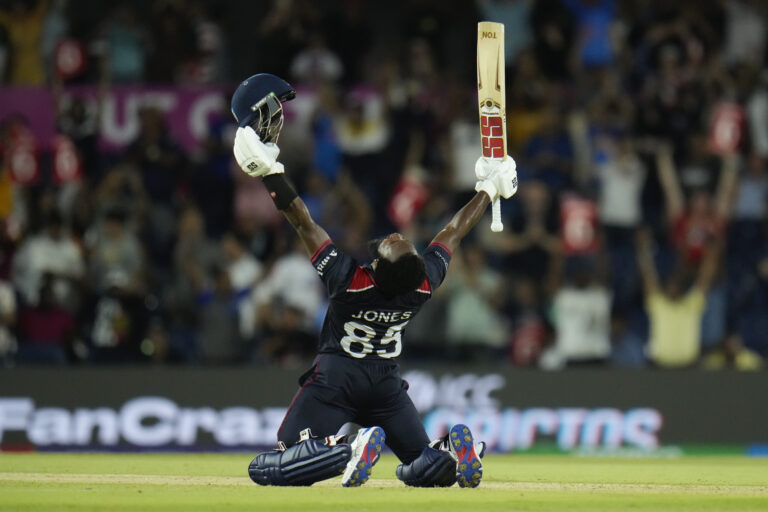Exploring Cricket’s Unique Language and Jargon
11xPlay, Allpaanel: Cricket, with its intricate rules and rich history, can trace its origins back to the 16th century in England. It evolved from a simple children’s game to become a nationally loved sport that eventually spread across the British Empire and beyond. Influenced by various bat-and-ball games like club-ball and stool-ball, cricket slowly developed its unique set of rules and regulations over time.
The influences on cricket are vast and varied, ranging from societal norms to technological advancements. As the game expanded globally, different countries added their own flair to the sport, resulting in diverse playing styles and strategies. This melting pot of influences has shaped cricket into the dynamic and captivating sport it is today, captivating millions of fans around the world.
Understanding Cricket Terminology
Cricket terminology can often seem like a language of its own, filled with unique words and phrases that may be unfamiliar to those new to the sport. From terms like “bowling a googly” to “LBW” (Leg Before Wicket), the vocabulary of cricket is rich and diverse, reflecting the intricacies of the game. These specialized terms serve as a means of communication among players, coaches, umpires, and fans, helping to convey specific actions, rules, and strategies on the field.
By familiarizing oneself with cricket terminology, fans can gain a deeper understanding of the game and appreciate its nuances more fully. Learning the meaning behind terms like “sixer” (a shot that results in six runs) or “duck” (getting out without scoring any runs) can enhance the viewing experience and allow individuals to engage more actively in discussions about matches and players. Whether watching a live game or following updates online, being versed in cricket terminology can enrich one’s enjoyment of the sport and foster a sense of camaraderie with fellow enthusiasts.
The Evolution of Cricket Slang
Cricket slang has a rich history that mirrors the evolution of the sport itself. From the early days of test matches to the fast-paced T20 format, cricket slang has continually adapted to reflect the changing dynamics of the game. These colloquial terms offer insight into the cultural nuances and unwritten rules that define the cricketing world.
As cricket spread to different regions and became a global phenomenon, new slang terms emerged, influenced by various languages and dialects. This diversity in cricketing jargon adds layers of complexity and richness to the sport, uniting fans and players alike in a shared language that transcends borders. The evolution of cricket slang is a fascinating journey that highlights the dynamic nature of language and its ability to capture the essence of a beloved sport.
Common Cricket Expressions and Phrases
Cricket is a sport rich in unique expressions and phrases that add color to the game. From terms like “sixer” for a ball hit over the boundary rope for six runs to “bouncer” referring to a fast, short-pitched delivery aimed at the batsman’s head, the vocabulary of cricket is filled with colorful terminology. Fans and players alike enjoy using these expressions to describe the intricate moments of a match.
In addition to specific terms for actions on the field, cricket also has a range of phrases that capture the essence of the game. Phrases like “It’s a sticky wicket” to describe a difficult situation or “to bowl a maiden over” meaning to impress or enchant someone, have become part of the cricket lexicon. These expressions not only highlight the strategic and unpredictable nature of the sport but also demonstrate the linguistic creativity that thrives within the cricket community.
How Cricket Jargon Differs Across Countries
Cricket is a sport with a rich history and a language all its own, but one interesting aspect of this language is how it varies from country to country. Each cricketing nation has its own unique set of terms and phrases that are used both on and off the field. From Australia to India to England, the jargon of cricket reflects the cultural influences and traditions of each country’s cricketing heritage.
In Australia, for example, cricket jargon is often characterized by its laid-back and irreverent tone. Terms like “sledge” for taunting an opponent and “agricultural shot” for a clumsy swing of the bat are commonly used in Australian cricket circles. On the other hand, in India, where cricket is practically a religion, the jargon is infused with passion and intensity. Phrases like “helicopter shot” for a powerful shot played by rotating the wrists quickly and “doosra” for a deceptive spin delivery showcase the distinctiveness of Indian cricket language.
The Role of Jargon in Cricket Culture
Cricket jargon plays a crucial role in shaping the identity and culture of the sport. The specialized terminology used in cricket not only enhances communication among players, officials, and fans but also creates a sense of belonging and unity within the cricketing community. From terms like “bouncer” and “LBW” to phrases like “sticky wicket” and “sledging,” the unique language of cricket reflects the rich history and traditions of the game.
Moreover, cricket jargon acts as a form of symbolic language that highlights the strategic and nuanced aspects of the sport. Through the use of specific terms and expressions, cricket enthusiasts can convey complex ideas and tactics with precision and clarity. This shared vocabulary fosters a deep understanding and appreciation for the game, allowing individuals to engage in meaningful discussions and analysis about cricket’s technical and strategic intricacies.
Exploring the Language of Umpires and Officials
Umpires and officials in cricket play a crucial role in ensuring fair play and upholding the rules of the game. Their language on the field is distinct, marked by a set of signals, gestures, and verbal cues that communicate key decisions to players and spectators. From signaling a boundary with a raised arm to the infamous finger raise for an out, the language of umpires and officials adds a layer of intrigue and suspense to every match.
The terminology used by umpires and officials is steeped in tradition and has evolved over time to become an integral part of the cricketing experience. Whether it’s calling a no-ball, checking for a front foot no-ball through a TV replay, or referring a decision to the third umpire, the language of umpires and officials is reflective of the game’s rich history and constant strive for accuracy and fairness. Their concise and precise communication is essential in maintaining the integrity of the game and ensuring that all decisions are made in accordance with the laws of cricket.
Innovations in Cricket Language
In the ever-evolving world of cricket, language plays a crucial role in shaping the game’s culture and identity. One of the recent innovations in cricket language is the introduction of new technical terms to describe different playing strategies and techniques. With the game becoming more data-driven and analytical, commentators and experts are using innovative language to explain complex tactics and approaches in a more accessible way.
Moreover, technology has also significantly impacted the language of cricket. The use of tools like Hawkeye and Snickometer has given rise to new terms and phrases to describe the game’s finer nuances. These innovations not only enhance the viewers’ understanding of the game but also enrich the overall cricket lexicon, showcasing how language continues to evolve alongside the sport itself.
Cricket Jargon in Media and Commentary
In the world of cricket, the use of jargon in media and commentary plays a crucial role in shaping the narrative of the game. From iconic commentators to online cricket platforms, the unique language of cricket adds depth and color to the viewers’ understanding of the sport. Whether it’s describing a player’s technique or analyzing game strategies, commentators often use a blend of technical terms and colloquial expressions to engage with the audience.
Moreover, the use of cricket jargon in media and commentary serves as a bridge between players, experts, and fans. It allows for a shared language that unites cricket enthusiasts across different regions and backgrounds. By using familiar terms and phrases, commentators can create a sense of community among viewers, enhancing their overall experience of watching and discussing the game.
Embracing and Learning Cricket’s Unique Language
Cricket, with its rich history and global appeal, has cultivated a unique language that adds depth and color to the sport. From terms like “googly” and “silly mid-off” to phrases such as “playing a straight bat” and “sticky wicket,” cricket jargon reflects the intricate nuances of the game. Embracing and learning this unique language not only enhances one’s understanding of cricket but also fosters a sense of camaraderie with fellow enthusiasts.
Aspiring cricket aficionados often find themselves immersed in a world of phrases and expressions that may seem perplexing at first. However, delving into the meanings and origins of cricket terminology unveils a fascinating tapestry of traditions, strategies, and tales from the cricketing realm. Whether deciphering the role of a “nightwatchman” or unraveling the significance of “back-foot play,” exploring cricket’s unique language can be an enlightening journey for enthusiasts of all backgrounds.
What are some common cricket terms that every fan should know?
Some common cricket terms include “wicket,” “boundary,” “innings,” “bowler,” “batsman,” “run rate,” “lbw,” “duck,” “century,” and “sixer.”
How does cricket jargon vary across different countries?
Cricket jargon can vary across countries due to regional influences, historical background, and cultural nuances. For example, terms used in England may differ from those used in Australia or India.
What role does jargon play in cricket culture?
Jargon is an important aspect of cricket culture as it helps to create a sense of community and shared understanding among players, officials, and fans. It also adds to the unique charm and spirit of the game.
How has cricket language evolved over time?
Cricket language has evolved over time to adapt to changes in the game, technology, and society. New terms and phrases are constantly being introduced, reflecting the dynamic nature of the sport.
How do umpires and officials contribute to the language of cricket?
Umpires and officials use their own set of terminology to communicate decisions and rulings during a cricket match. Their language adds to the overall atmosphere and drama of the game.
How is cricket jargon used in media and commentary?
Cricket jargon is commonly used in media coverage and commentary to provide insights, analysis, and context for fans. Commentators often use colorful language and expressions to enhance the viewing experience.
Why is it important to embrace and learn cricket’s unique language?
Embracing and learning cricket’s unique language can deepen your appreciation and understanding of the game. It allows you to communicate effectively with fellow fans, follow matches more closely, and fully immerse yourself in the rich tradition of cricket.







